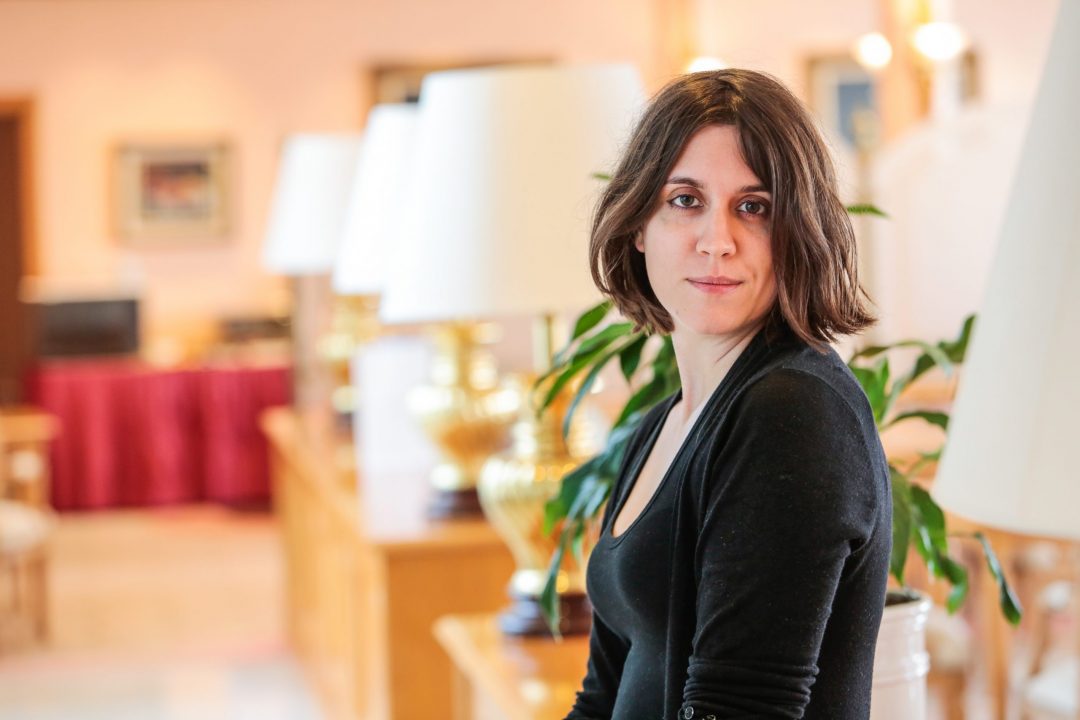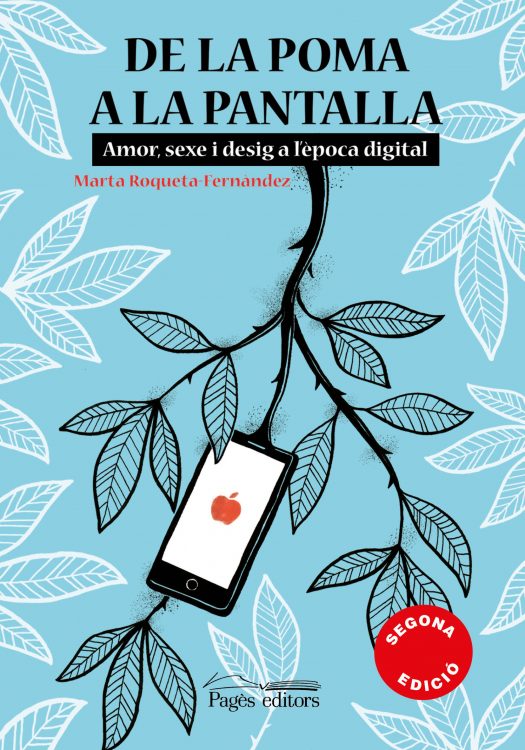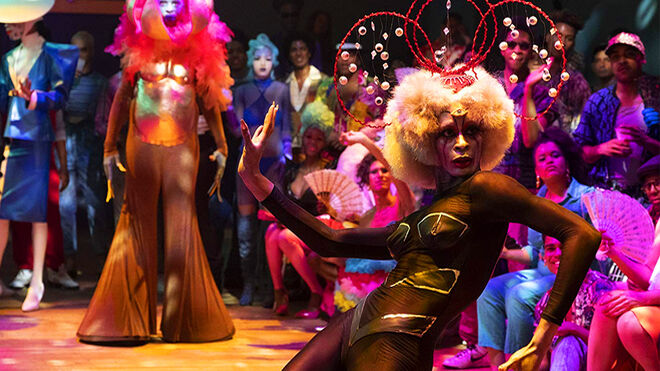
Marta Roqueta Fernández is a journalist and feminist, a path that has led her to investigate the representations of gender, ethnicity, functional diversity and LGBTI identities in mass culture. His first book From the Apple to the Screen (Pagès Editors, 2019) has already sold out its first edition.
Media analysis is our common line of work . So we talked to her about this essay where she reflects, from her own life and experience, on the influence of the digital world on our lives.
The novelty is that this book can also be a roadmap for professionals in the world of education. She brings an educational guide to work with young people, as she explains in this interview.
eP.- What motivated you to write a sexuality book for teenagers, when it seems that they have learned everything?
MRF.- The book is part of a collection called Nandibú-Zeta, by Pagès Editors, in which the idea is to analyse current affairs and how these issues are influenced by the digital world. The first theme was love, sex and desire. Well, I was very interested in exploring how the digital world shapes the way we love, desire and have sex, and how it reinforces, and at the same time challenges, all the regimes of power articulated around love, sex and desire. That was my idea. But, it turns out that young people do not have sex education as one would expect, that is, an education that goes beyond disease prevention, and focuses more on issues about affection, desires… Well, the idea was to take advantage of the analysis of the connection between the digital world and sexuality to address issues related to sex education, which seem to be clear, but then, you analyze it and in practice they are not so clear.
eP.- You have had testimonies from young people to write your essay. How do you set all this up within the book?
MRF.- In the book I explain my experiences, examples of mass culture, and I relate it to the feminist, LGBTI and anti-racist theory of the time. And although they do not appear, it is true that to finish knowing what experiences of my life could be relevant, I did a series of interviews with young people to see how I could help them and how I should approach these issues. I spoke to young people to find out if what I proposed was relevant, if I had left something that particularly concerned them and to see how my testimony could help them resolve their doubts.

eP.- Now you go to high schools to do training with the book, what is the state of the art like? Is ignorance so great?
MRF.- I have done a couple of trainings in high schools and what I realize is that in general students have learned the theory very much, to a certain extent, but when you give examples, in practice, it is where doubts, contradictions, etc. arise. It is true that in my book, I not only explain love from a Western perspective, but I give examples from LGBTI or around the world, from Japan to Sudan or Cuba, of artists who have challenged the sexual regimes of their countries. Well, here you do see racialized students, from here, Muslim girls who have doubts, speak, ask for information and feel represented by these examples. Because what has happened is that in the West we have a very specific idea of romantic love, which is used to consolidate a heterosexual, monogamous family model, father, mother and children, in accordance with capitalist society and the sexual division of labour. In my book what I do is give other examples of ways of understanding love, forms of resistance to colonial imaginaries about sex and love, or about some countries such as Japan, which is a mixture of the taboos that exist in that society. There are students who do not feel represented in the conversations about love, sex and desire that are made, but who, with the book, have an easier time expressing certain attitudes and concerns.
eP.-It seems that girls have been more receptive and participative. What happens to the boys in training or when they read the book?
MRF.- I conceived it as a book for people of all ethnicities and genders: boys, girls, non-binary people, Cis, transetc. And in this sense it is true that racialized people, and especially girls, also white girls, and LGBTI people, racialized or not, have reacted favorably to the book. In the case of white, straight and cis boys, there is more reluctance. I think it happens because, whether you like it or not, machismo and LGBTIphobia are ways of seeing ourselves and others. And many times these forms of relationship, sexist or LGBTIPHOBIC, have been presented to us as an appropriate way of relating to others. I think that two things happen to boys: a certain disorientation, that is, when we question all these gender issues, because they do not know how to act, they do not know who they are, and when they question how to act with others, they do not know how to act. The straight white guy, so to speak, as an example, finds it harder to get in. But, anyway, I already knew that this would happen, and then I looked for examples so that the boys can feel identified, and that they can understand where this discomfort comes from when they deal with these issues, and that above all, to know what they can do with this discomfort and how they can act to have more egalitarian relationships, but at the same time, healthier for them. Because deep down, machismo affects the way they perceive themselves and sometimes affects them in a negative way.
eP.- Is the book also aimed at teachers and educators? How did they receive it?
MRF.- Although the book was originally intended primarily for young people, we have seen that during the time it has been on sale it has also interested adults. In fact, when you think of content for young people, in a way you know that sooner or later some adult will read it. Among the professors it has been very well received, also among public institutions and the adult public in general. It is true that there have been some cases in which, for example, there was a teacher who did not want her school to talk about the book, because she said that, because we were talking about LGBTI theory, about theory queer, well she said that theory queer She wasn’t a feminist and so this book didn’t interest her because she wasn’t a feminist. When in fact queer theory has feminist aspects, and in any case queer theory and feminist theory do not have to be absolutely opposed, nor is one in conflict with the other.

eP.- How bad has the influence of the media been on the way we love, desire and have sex?
MRF.- My book is based on the idea that digital technologies and the audiovisual world are not bad in themselves but, in any case, what determines whether they are harmful or beneficial is the use we make of them. And the book is full of examples of positive representations of sexuality and ways of loving that we find in the audiovisual world. From Pose to Steven Universe to Disney’s Frozen. I also quote artists like Alaa Satir, Megumi Igarashi. All these artists bring us closer to new ways of seeing sexuality and relating to other people. The idea of the book is this, until now we have had a very apocalyptic image of the relationship between digital technology, love, sex and desire, but this is not necessarily so, it is quite the opposite. The diversity of voices facilitated by the digital world also leads us to discover new ways of loving that, until now, were covered, because those who had control of the audiovisual media were a few hands. And it also creates digital spaces in which new ways of loving can be developed.
